Found this old presentation from an old workshop or something, and thought it might be cool to post here. It’s about this graphic novel I wrote and drew years ago. Didn’t really go anywhere, but it did open some doors and I learned so much that I don’t consider it time wasted. It was a hell of a project that took the better part of 4 years worth of nights, weekends, and any other time I wasn’t working on paying stuff to complete it.
“Transient “ all grew out of an idea from back in around 2003-2004. living in the SOMA in SF, walking to work one day I saw a homeless man talking to himself, and became obsessed with the idea of filming it and compositing in a cg “whatever he was talking to”. The more I thought about it, the more I was into the idea. The fact that it could be anything he was talking to was really interesting to me. It could be a monster, or a giant can of soda or whatever. There was this absurdist angle to it that was very appealing. I kept it on the back burner for a while.
In 2005, we’d started up MB, and I was surrounded by all these really creative guys. At some point I brought the idea up with them. The guys liked the idea, and there were several spirited conversations that followed which helped me lay the groundwork for this project. One day I came into work and Wes says to me “a few of us were talking about your bum thing last night, and what if there was like a war for humanity going on and the bums were there to protect us?” BOOM! It was perfect. It made perfect sense to take this approach. For me, this was the idea I could begin to run with, so I did!
by October 2005 id drawn and written the first ten pages of the comic. And it was terrible. I had no idea what i was doing layout-wise, I had not “written” anything since 10th grade high school English class, and basically had no idea about the language of sequential storytelling. Not that that stopped me or anything. I knew it was shit, and that I was out of my depths with it. I shelved the comic idea for a while, and began working on other loose works based around it instead.
For the next few years, I kept it in the back of my mind, thinking more about the story and whatnot. “Incubating” I guess you could say. In retrospect, I think this was the best thing I could have done. I wasn’t ready yet. The idea wasn’t ready either…but I continued to produce drawings and paintings themed around this homeless monster idea.
Over Christmas vacation in late 2007, I pulled those first 10 pages out and started to rework them a bit. Once I got them a little more presentable, I sent them off to my friend Igor. his comic work is pretty amazing, and I remembered him telling me that he’d gone to school for comics, so I figured I’d send him my paltry effort and see if I could get him to tell me all the things I was doing wrong.
Luckily, Igor is a very nice man. Over the course of a 3 hour internet chat he broke down to me everything panel by panel, what I was screwing up. He lectured me about the importance of layout, story flow, leading the eye, a bunch of crap I already kind of knew but didn’t understand how to apply it to the comic medium. It was very educational. He also told me that while I was doing a host of things wrong, I was also doing a few things right, and he thought it showed a lot of promise. I promptly picked up the pieces and began reworking those first 10 pages…again.
That’s when I got hooked. I wrote the next few pages as storyboards, since I had more experience in that arena, it made it a bit easier to get the ideas out. Once I was far enough into the story, I began drawing them more as comic book pages, and thus began the 3 and a half year journey that was transient.
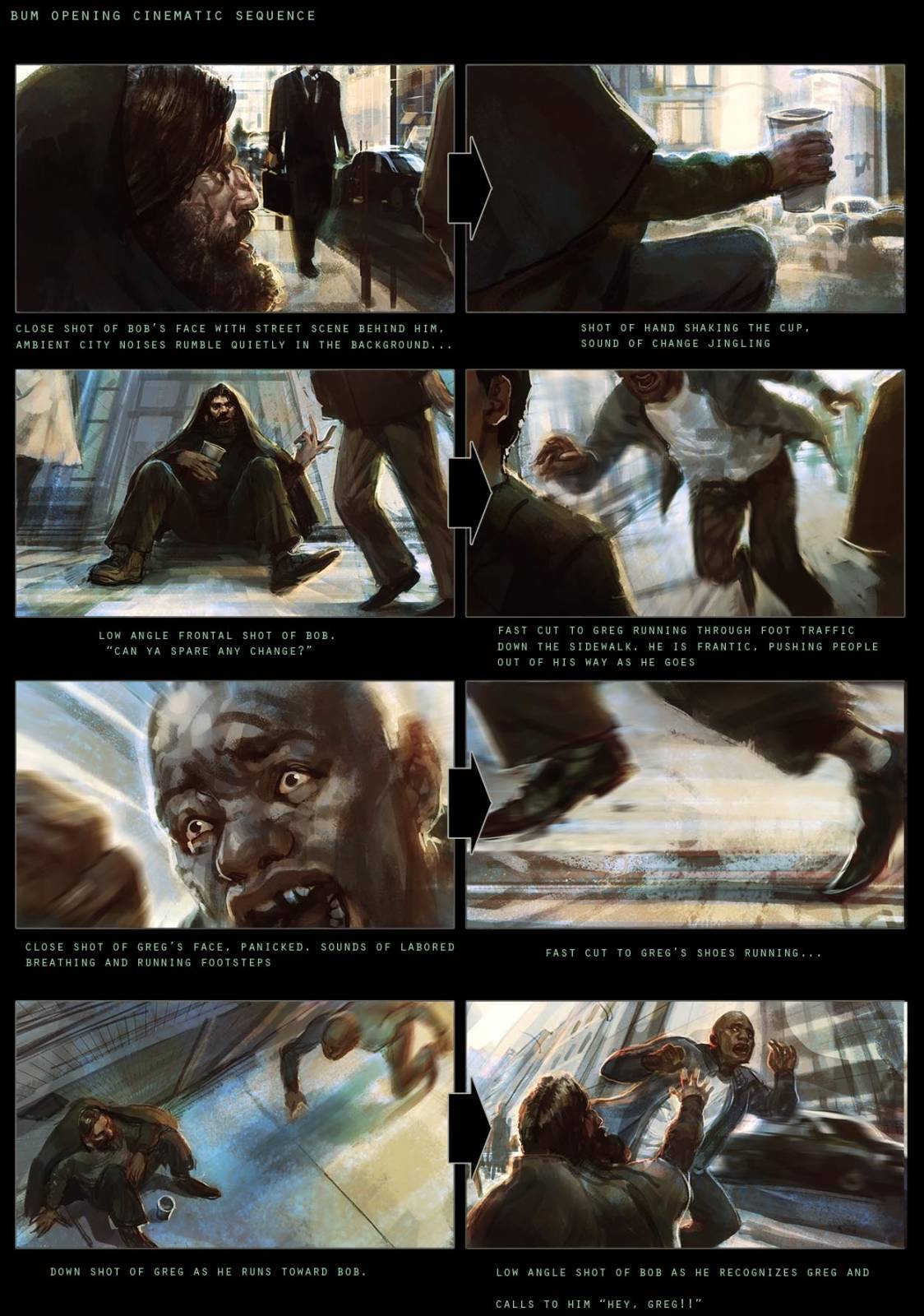
storyboard sequence I eventually had to redraw in comic form. working in board form helped me flesh the story out in a more familiar format
art style:
I wanted it to be easy for me. I drew toward a style that happened naturally. Even though I chose to execute it digitally, I wanted to use textural brushes and broken edges to create a more hand done “weathered” look. Due too the subject matter it didn’t make sense to make it too slick and graphic. It had to be dirty.
I used very little photo reference in the book. I wanted this to be a test for me artistically and to challenge myself, so i drew as much from my head as possible. In the end it took longer, but was well worth it. I learned soooo much having to draw the mundane and unimportant over and over again. Don’t get me wrong, I built a couple 3d scenes for two of the heaviest sequences. There was a freeway scene in particular I didn’t want to go through without some help. but outside of a few photos of Sacramento for building placement, and some shots of union square, I pulled everything else out of the old noggin.
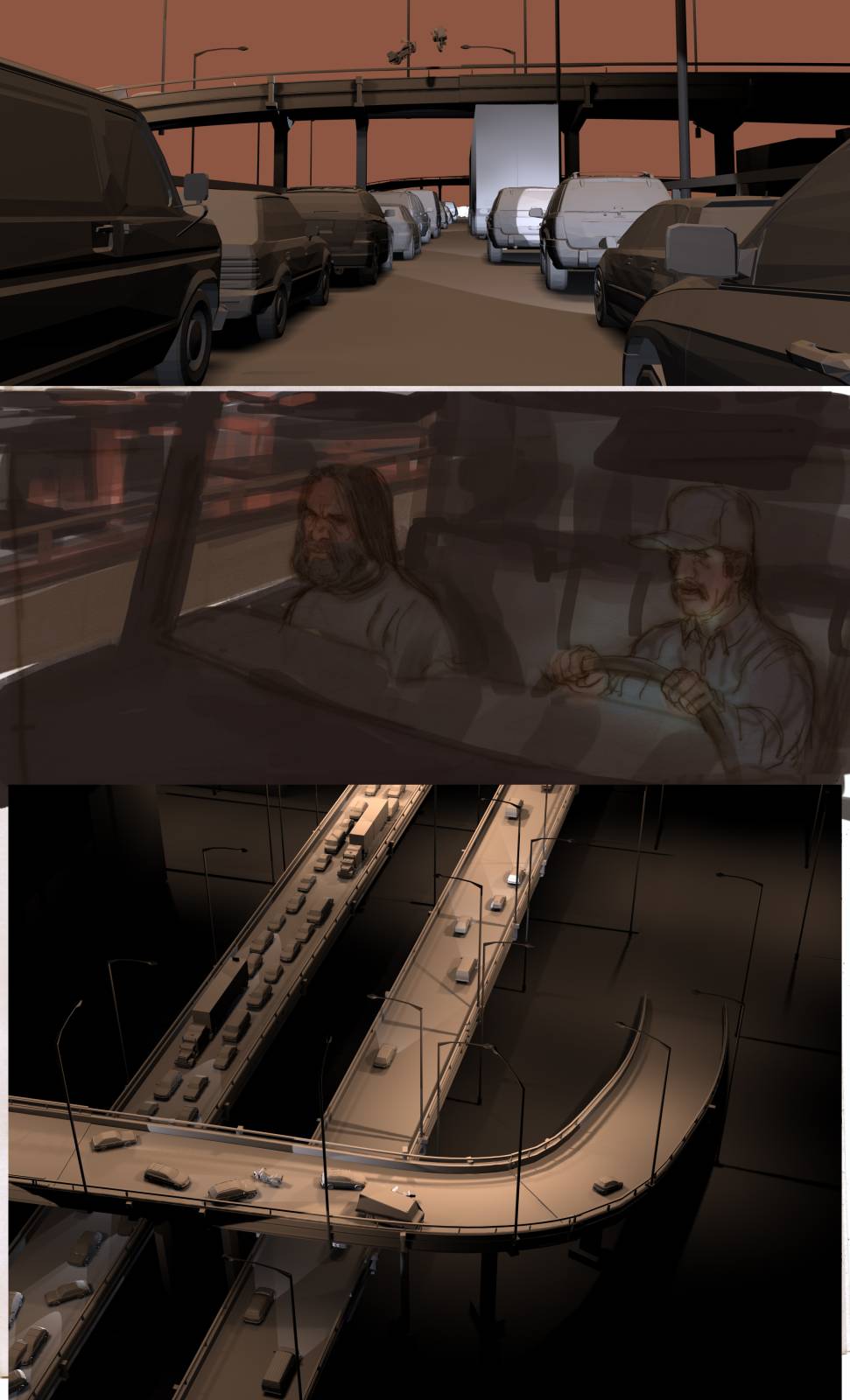
Because of the amount of elements present and the need to ensure locational accuracy, I built the freeway and ramps and placed a bunch of the cars in 3ds max, which I then painted over
emotional attachment:
The overarching theme with the transient project for me was to take an unconventional or unmarketable concept, and to try to wrap it in the most familiar format and give it as much “heart” as possible, to try to make it feel like a mainstream product. My aim was to make it easily digestible, and draw from very familiar themes and arcs story-wise. It’s a satire, as I found writing comedy came much easier than drama.
Took the standard hero’s journey and retrofitted it with more “homeless” elements. I wrote the book as I went along, which is easier than you’d think if you are following kind if a set story structure. At any point all I’d do is sit there and say to myself, if I were watching this on TV right now, what should happen next? I also asked my partner Melissa. A lot. She watches lots of TV too and brought some great suggestions to the table.
I tried to write my own insecurities and issues into a lot of the characters. The fear of failing those you love, the fear of responsibility, daddy issues,….
Thematically, I chose this story because of where I live and what I’m surrounded by. I wanted to write about something that was familiar to me. Even though the premise of the book is ridiculous, the aesthetic is pulled from my everyday life. The characters were based off archetypes I’d see around my neighborhood. I don’t expect everyone to understand this book. But I’m much happier writing about something I know and care about than if I’d written something about cowboys or spacemen. No offense to anyone who’s into all that-I just think it would have been difficult for me to put my heart into something like that-even if it’s commercially more viable.
process:
Process wise, I found it was easiest to stay as procedural as possible due to the high volume of work I was to produce. I quickly set up a system that I followed (more or less) throughout the project.
I’d start with very small thumbnails. this was the most heavily revised step in the process. By working out all the problems on a tiny scale using only shapes in the beginning, I could easily finish them out with few revisions or surprises. It’s not that I didn’t do thumbnails before, however I’d never spent as much time on them, and that wound up being a valuable lesson. I tell students until I’m blue in the face now to figure everything out at the thumbnail stage and not rush into a picture. you can’t build a house without a solid foundation. in picture making a good thumbnail is that foundation. It really is faster.
Once the thumbnail was done, I’d scan it, blow it up and print it out, then create a more refined drawing on top of it rescan the larger one back into the comp for painting. The last 60 or so pages, I eventually began just working on top of the thumbnail as I got more comfortable drawing in the computer.
Once in the computer, I painted pretty directly, using all the cheap tricks I’ve learned whoring myself out to corporate entities over the past 15 years. I’ve done lots of key art for games and stuff, and am a huge fan of film cinematography, so I wanted to really push the lighting as much as possible. SF has beautiful light, and that was something I really set out to try my best to capture.
Layout and dialogue came last….And it was a total bitch since writing is not my vocation. But I hobbled along, and somehow got through. One interesting thing that came from it was that I found myself paying extra special attention to the dialogue in movies and stuff. How people talk, vs how people write. It was also interesting to see that much like how a picture evolves from a sketch, repetitive rough dialogue becomes more streamlined and coherent with every pass. I guess it’d been so long since I’d written anything I had to rediscover that.
Whats the point?
You should do it too. Making something like this was one of the the best things I’ve done in my career. Even though it wasn’t a hugely successful thing, I can’t look it as time wasted because of the things I’ve learned from it. It sharpened my focus and vision as an illustrator, and made me a more conscious storyteller. It taught me about process and dedication in a way few things will. It was a fucking Odyssey. It was art school x10. All the crazy shit that was going on in my life during that time, all of it–this book was the sub-plot going the whole time, every night, every weekend. I think it kept me sane. It kept me from becoming Bob myself.
If you take anything from this, please take from it that time is valuable, so spend it on things that are important to you. Make your mark. Find your voice. Take chances making the art you want to make–don’t pander to what you think collectors will buy or agencies will hire you for. I’m a thick headed idiot, and I had to learn this the most round about way possible, but I can’t preach enough to people how valuable this shits been to me as a tradesman. You are all in this to better your craft–but what you do with your craft is up to you. If you do something that really matters to you, you’ll learn more than you can possibly imagine from it.



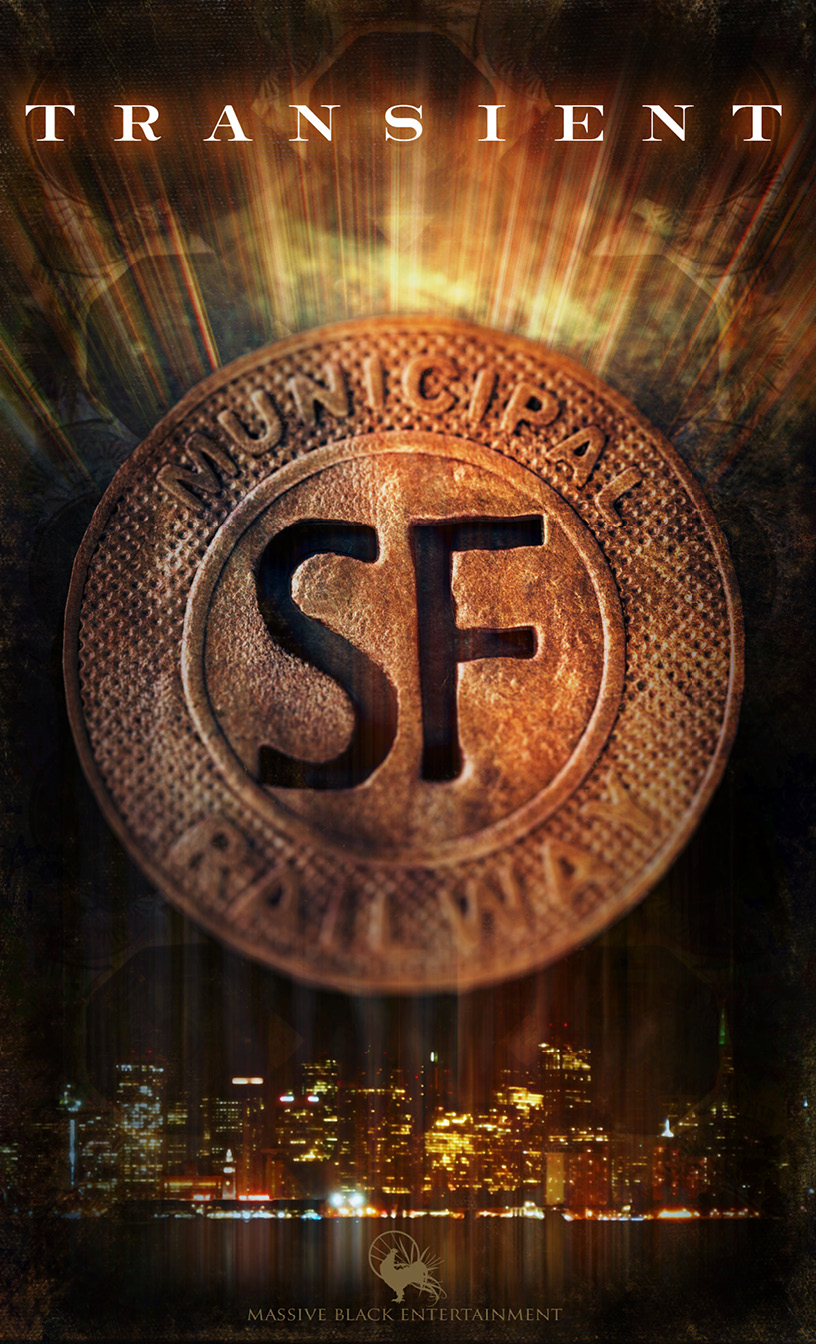
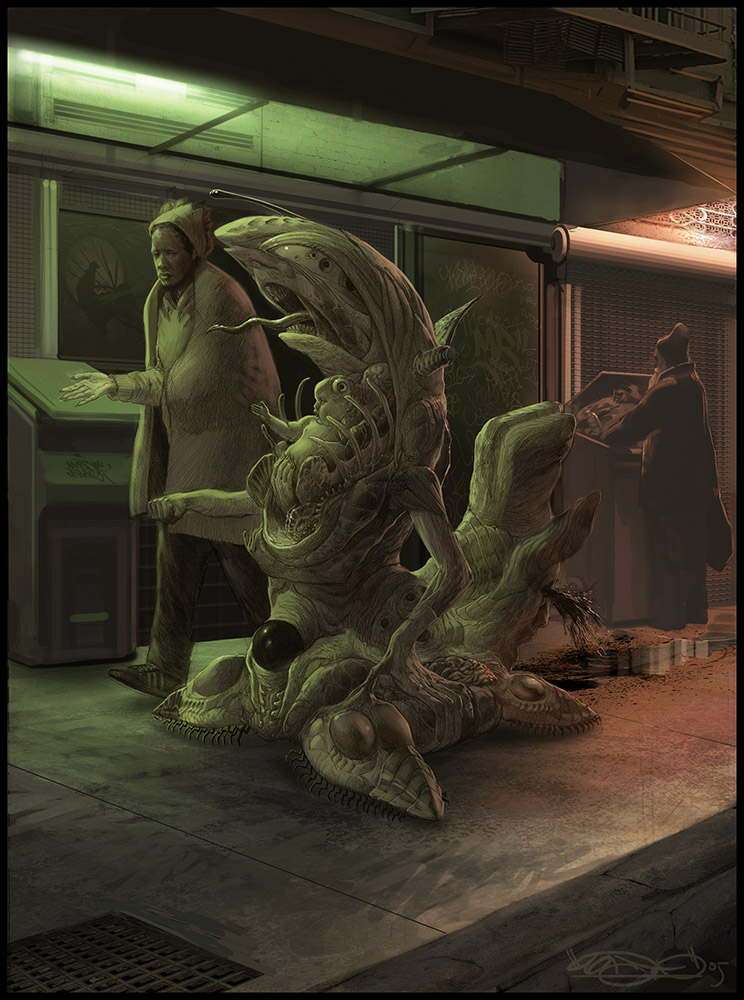
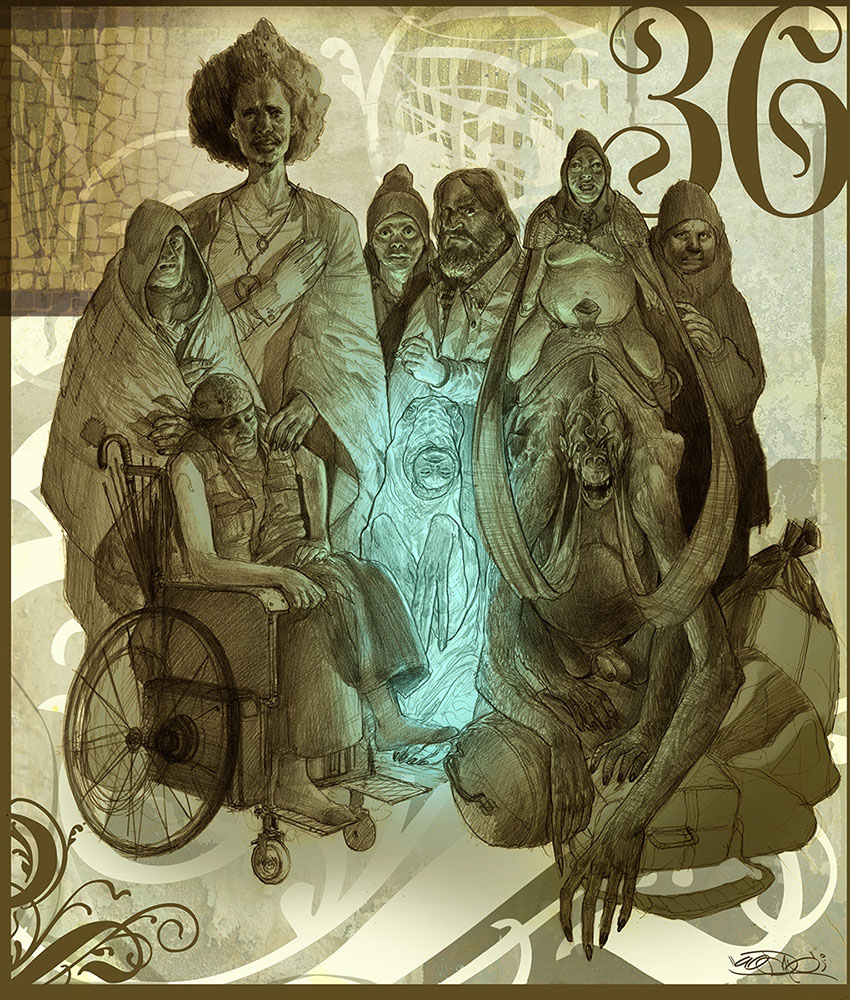
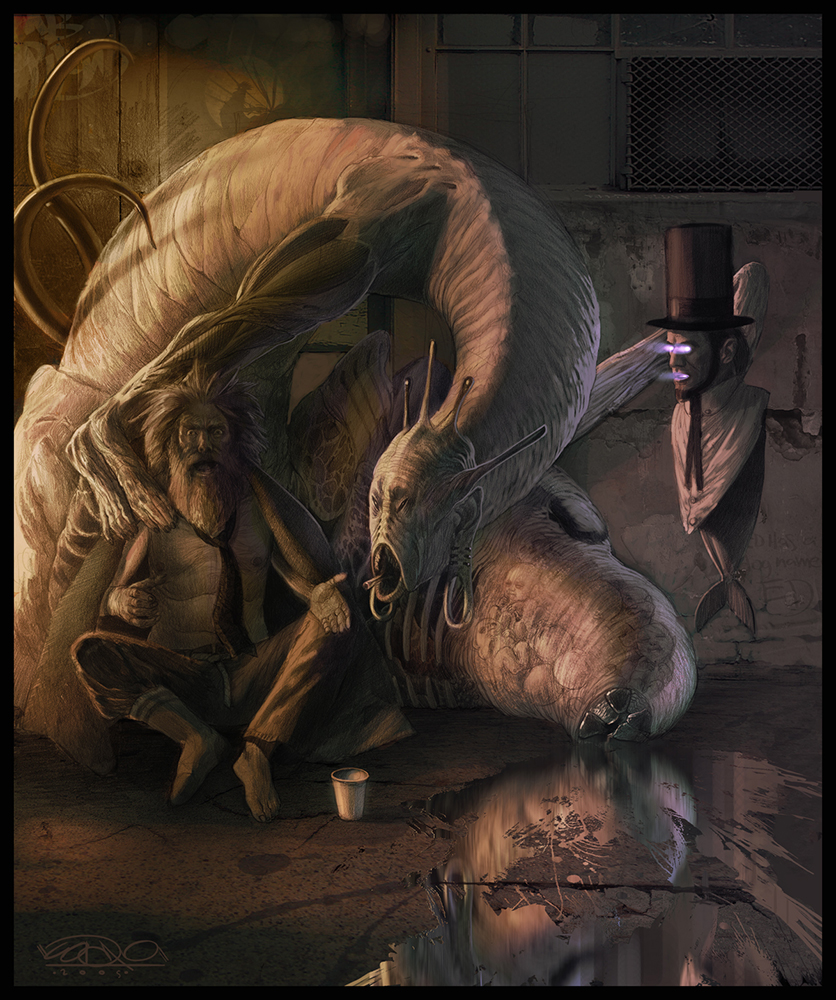
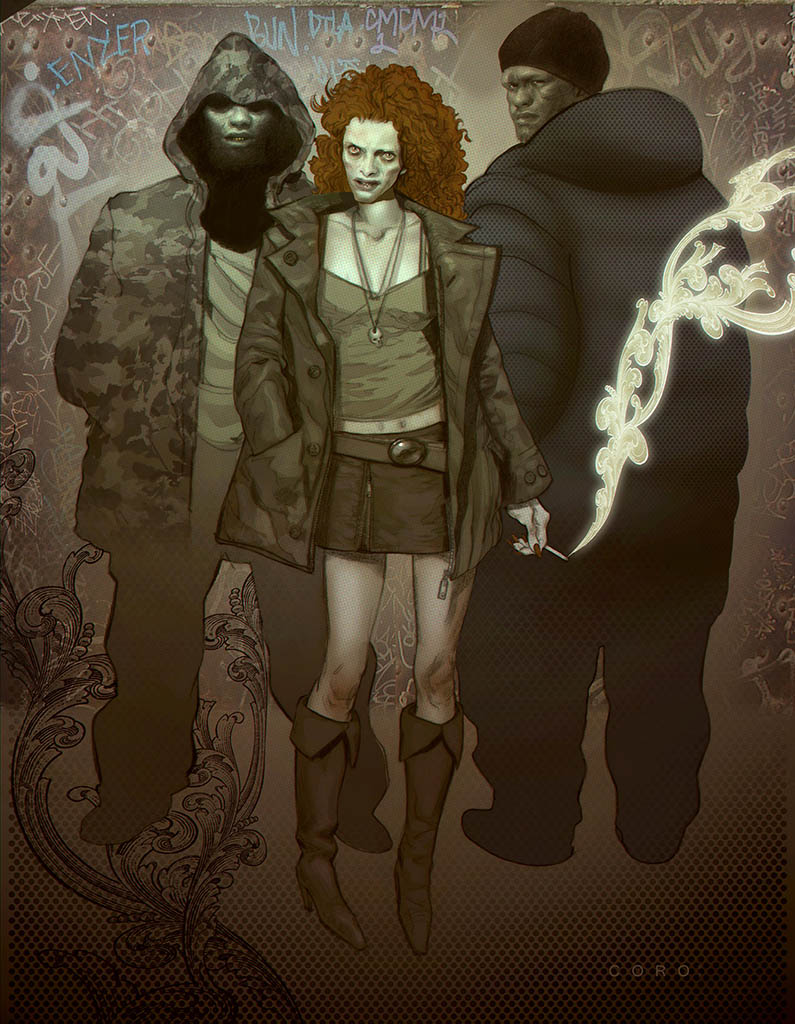
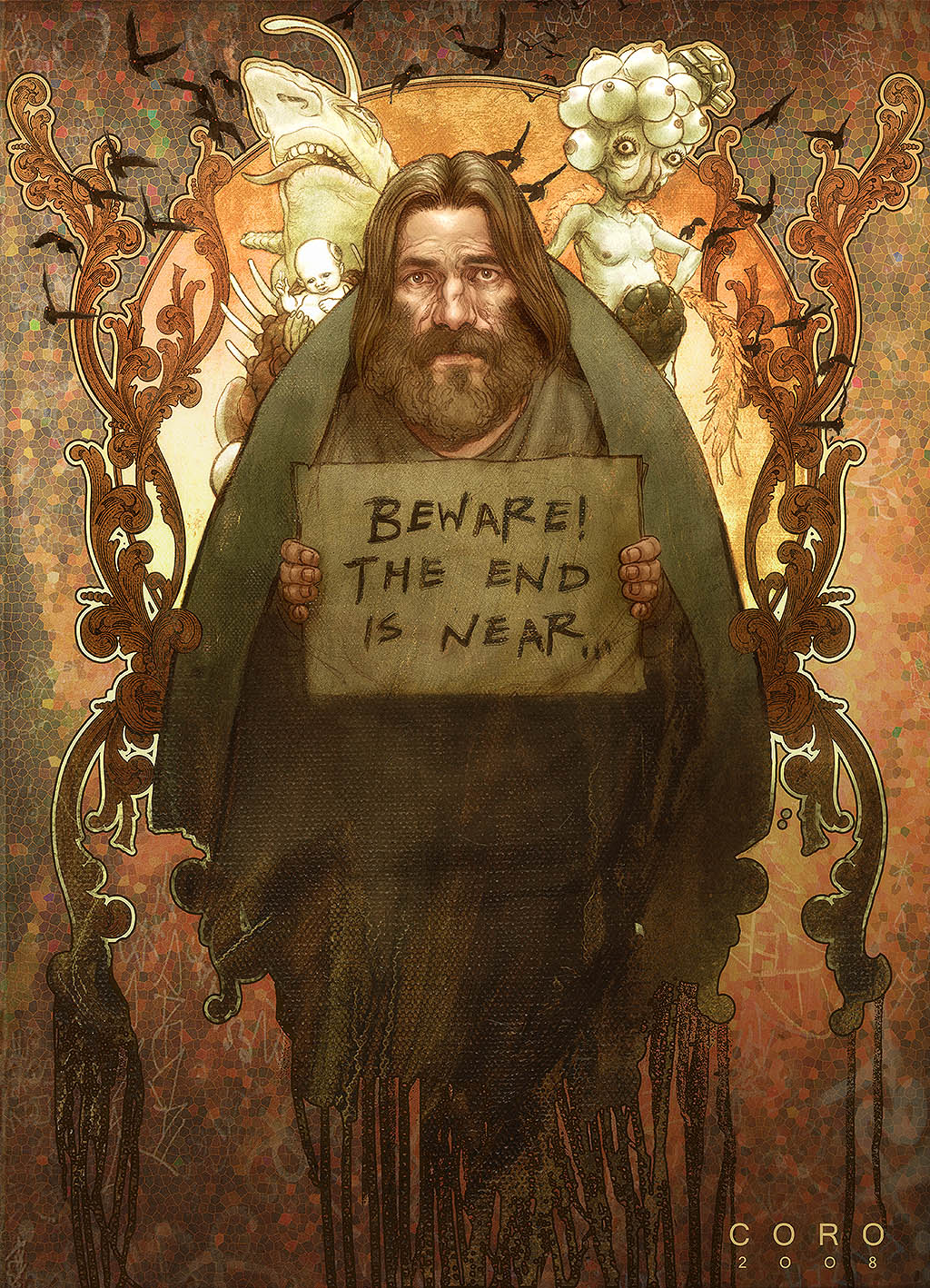
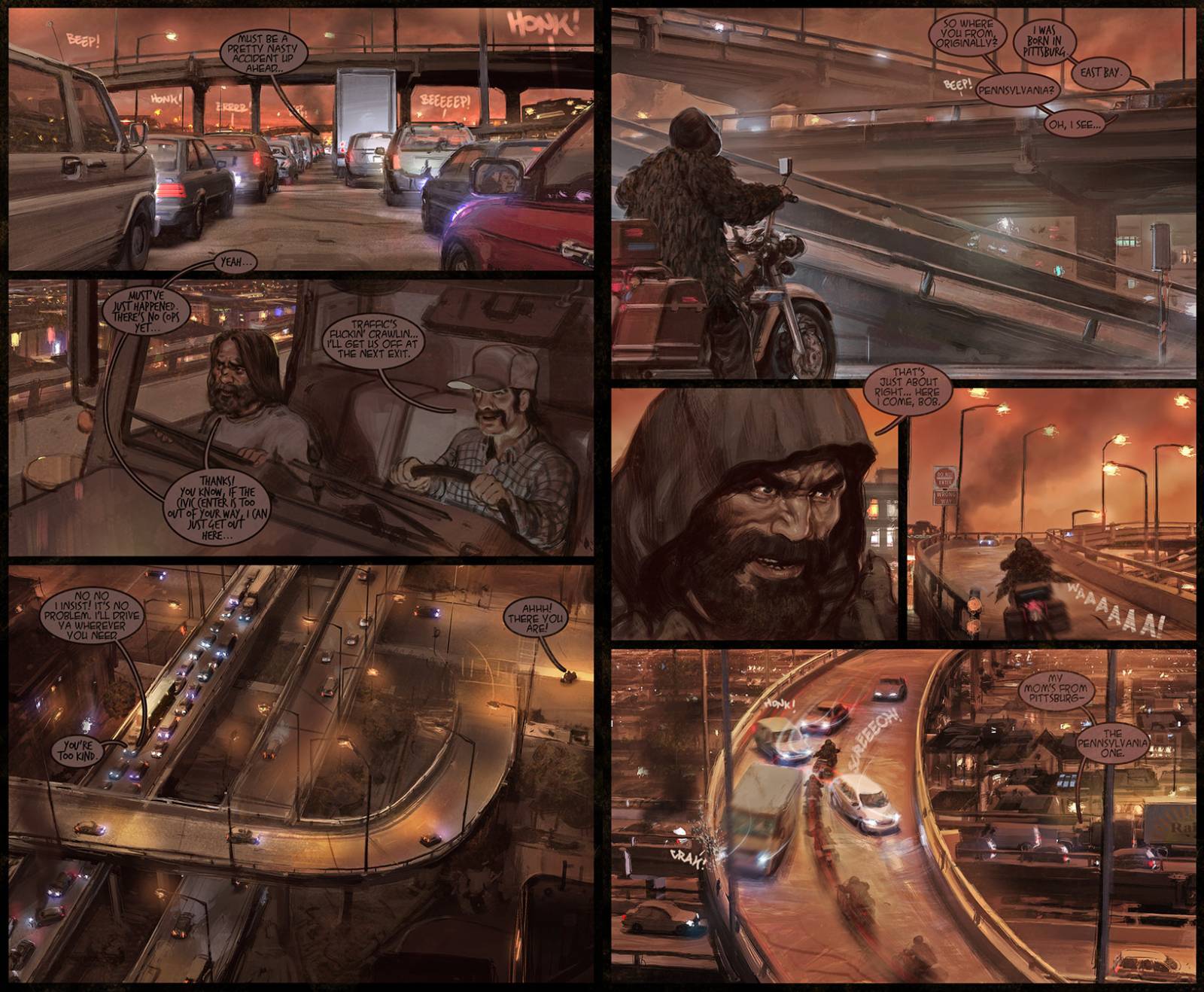
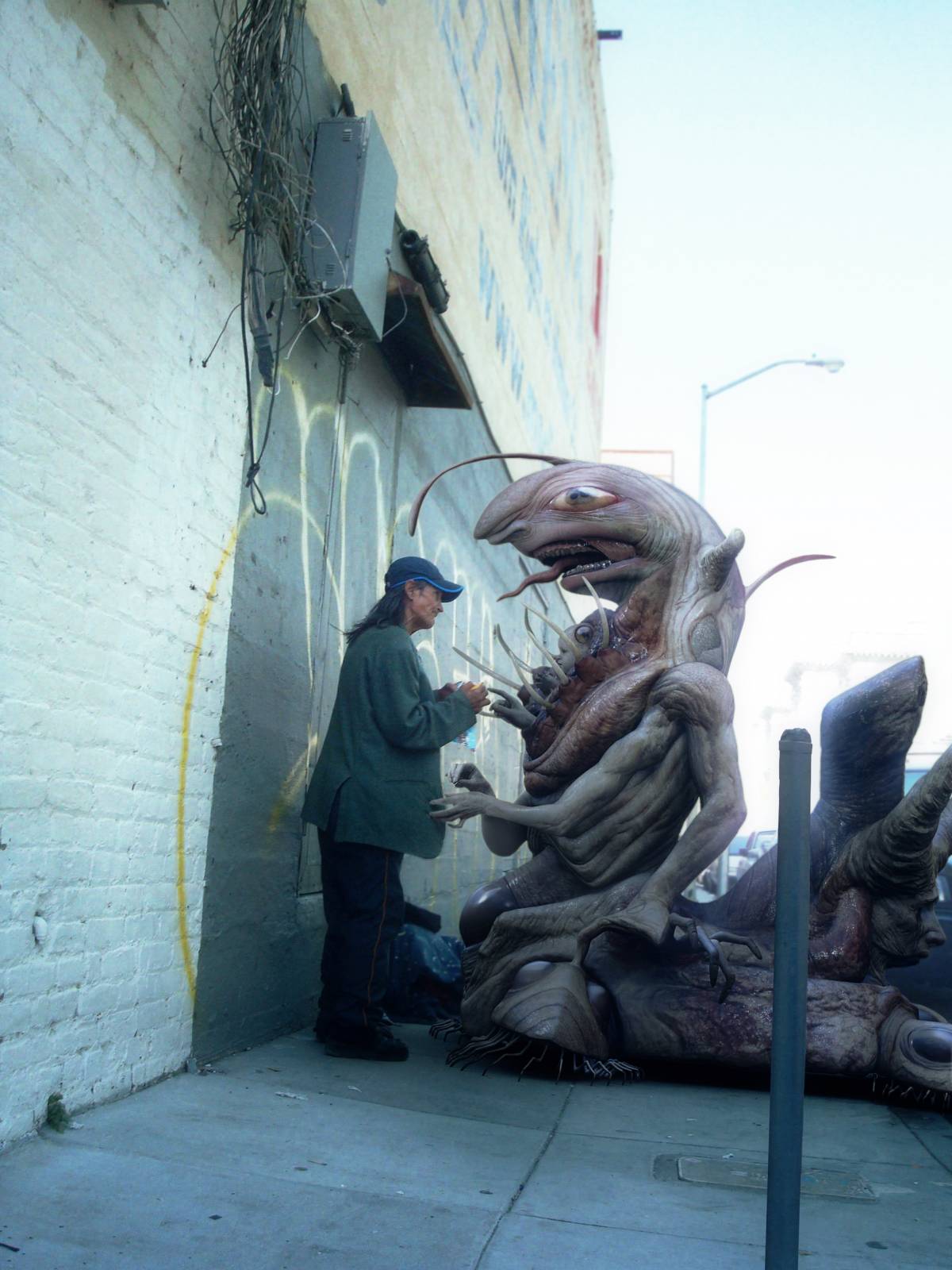
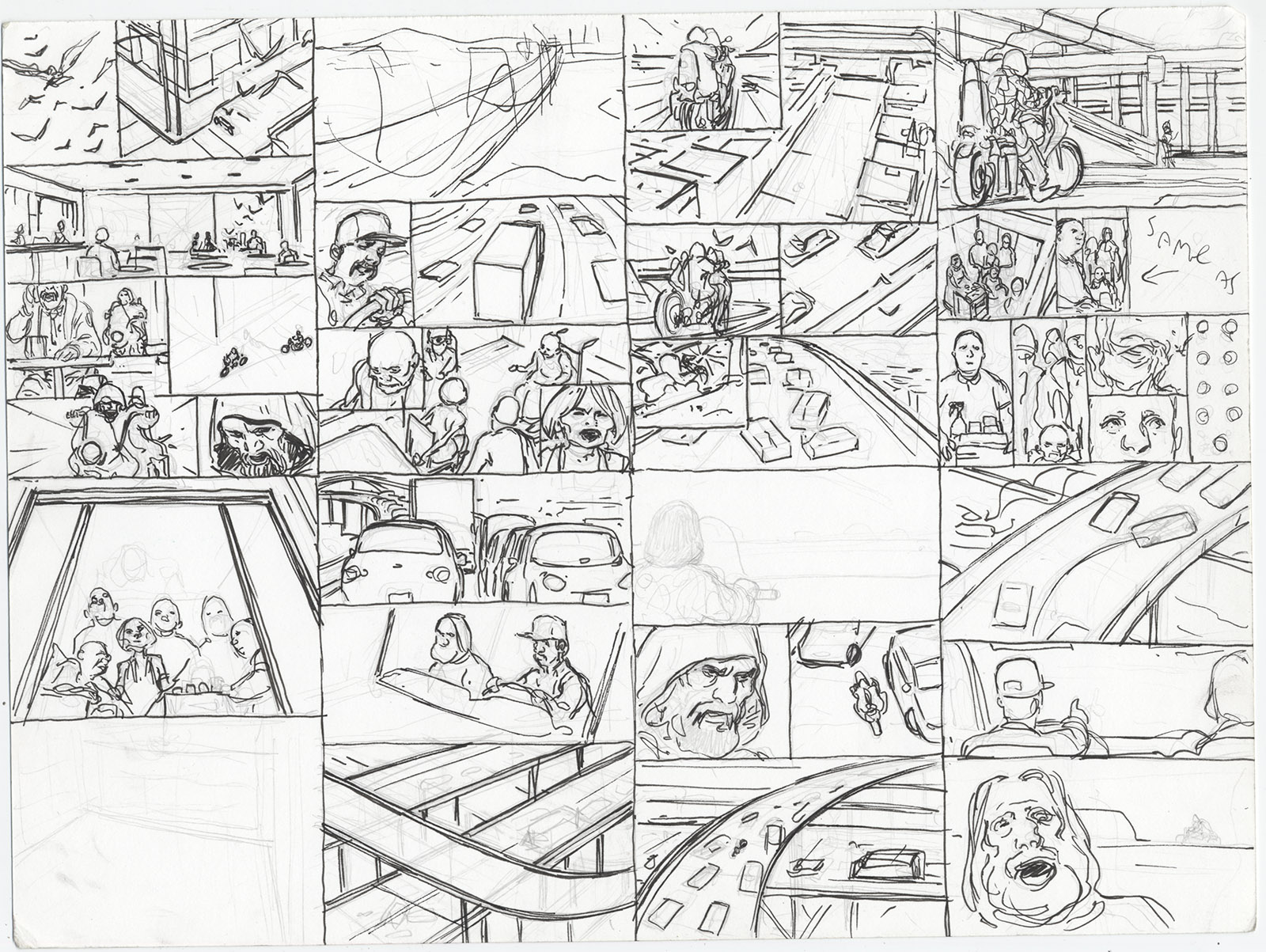
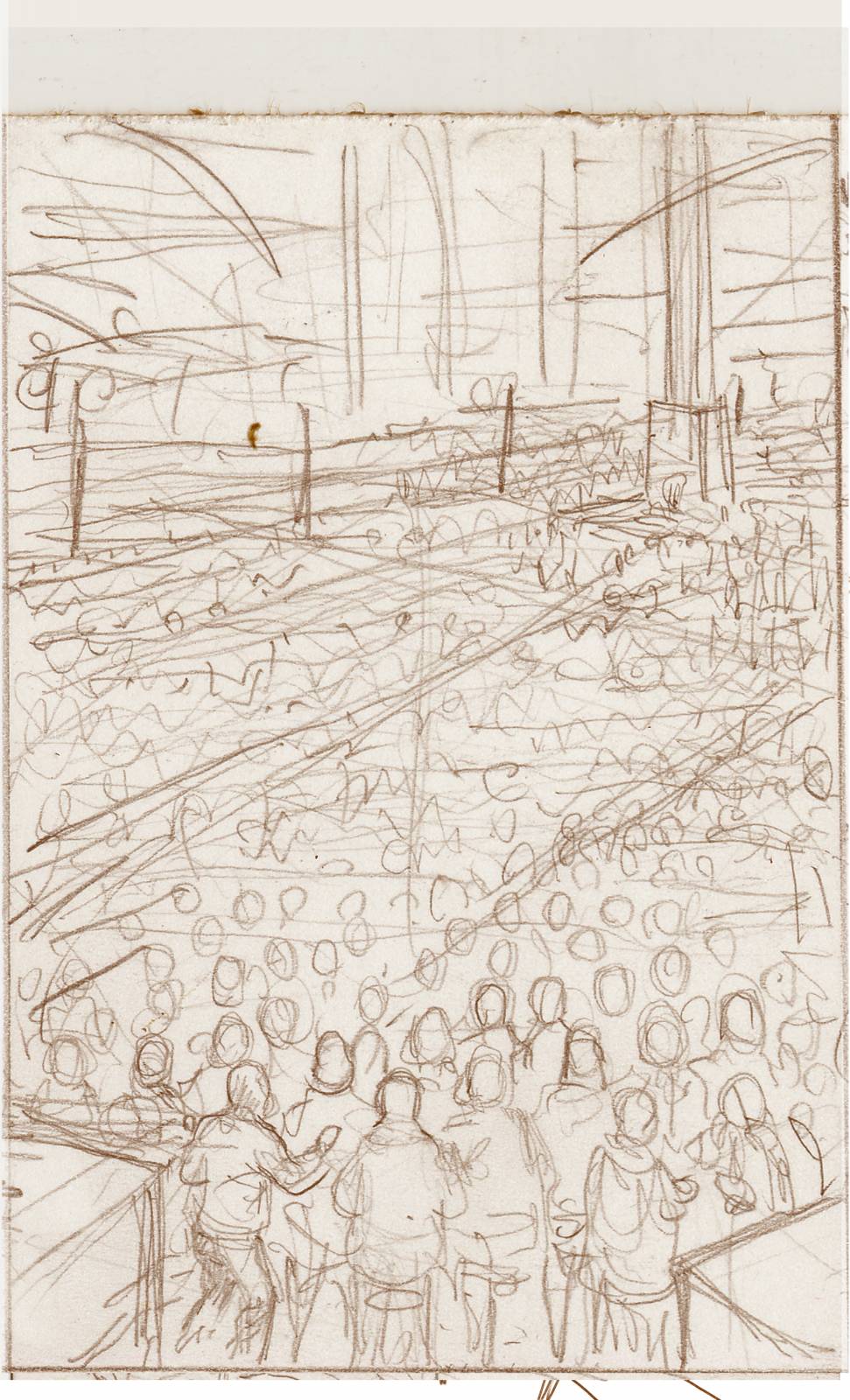
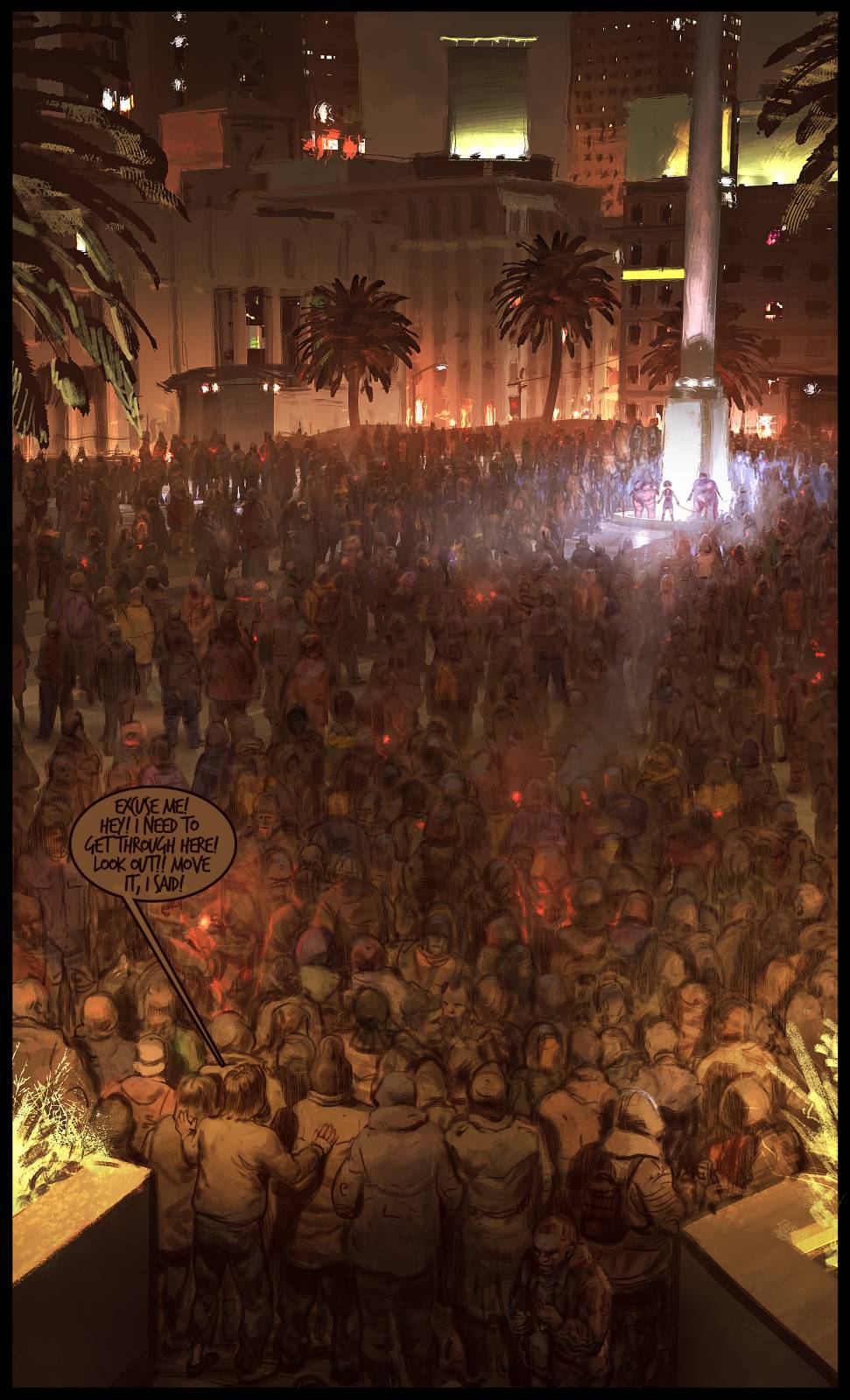

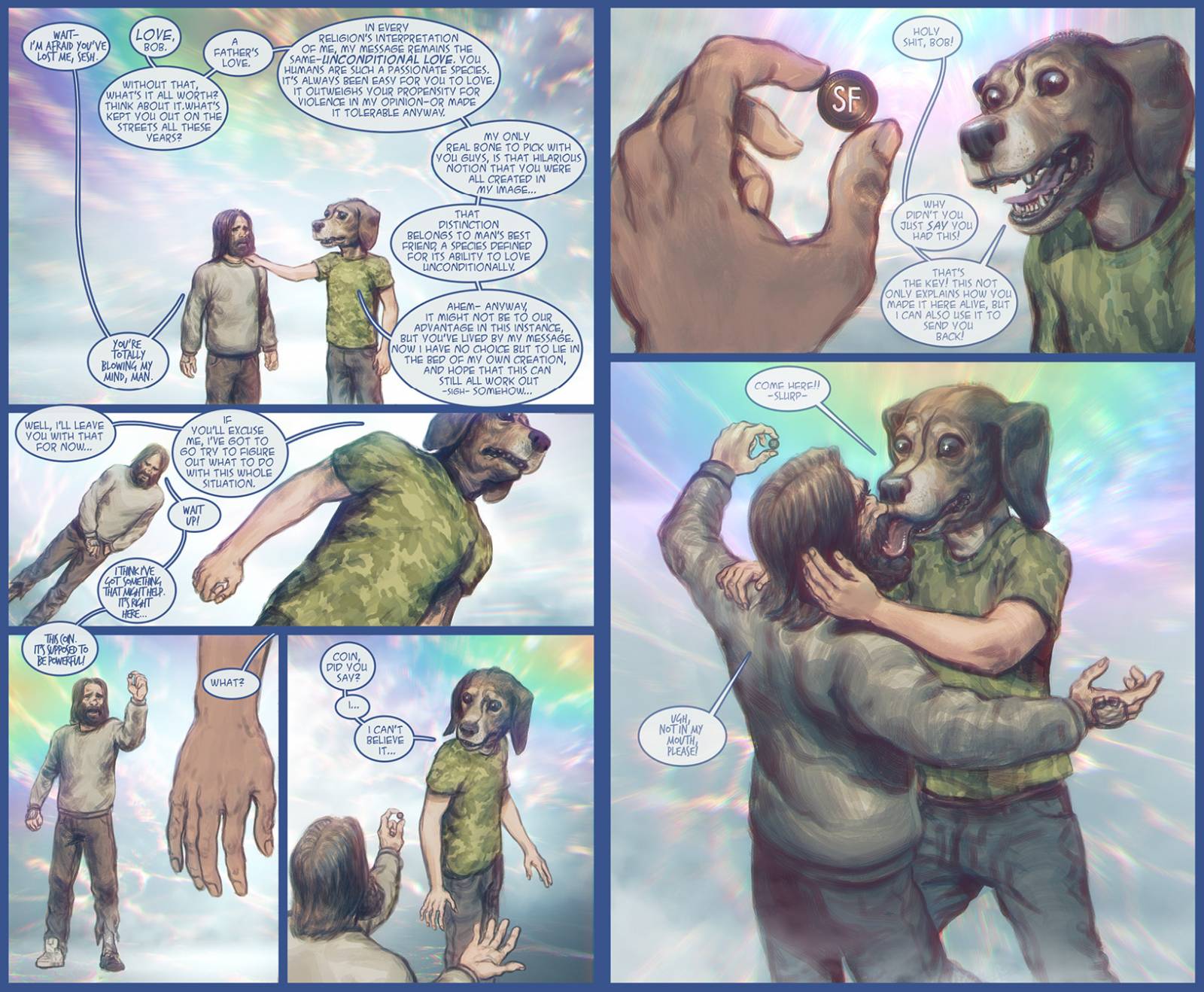
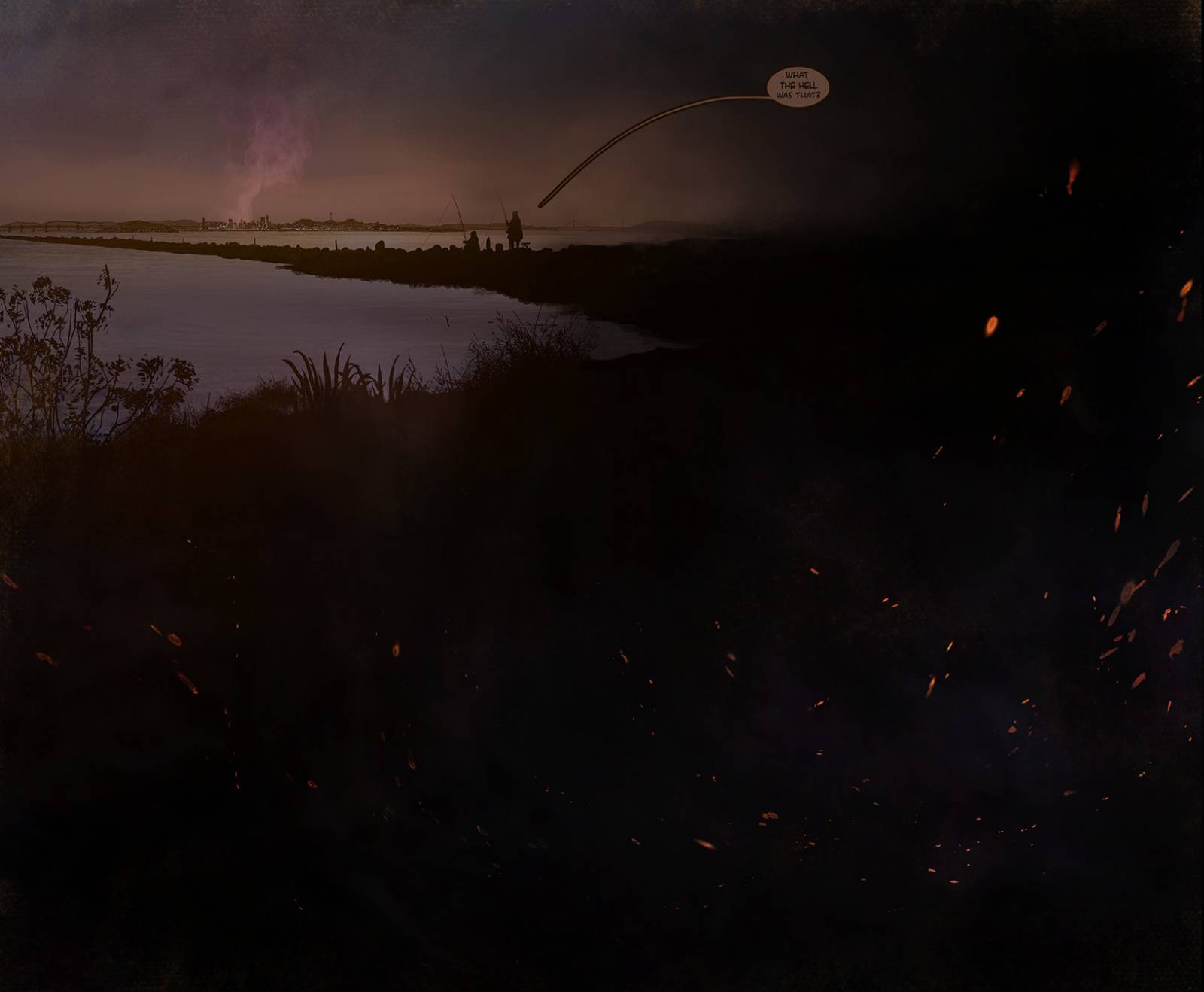
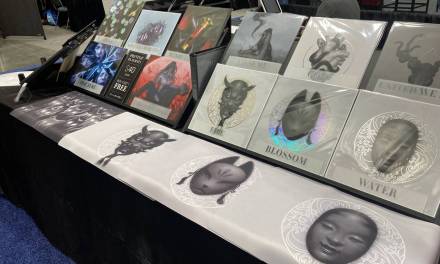
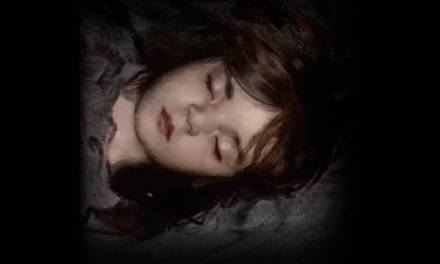

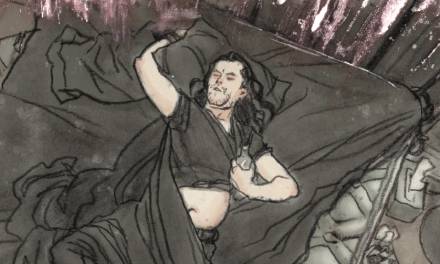
Justin-
I LOVE this story idea! I think commercially viable stuff isn’t always the best. Is this available or did it never see print? If it’s a GN i’d like to pick it up and give it a read. Great article,Cheers-
If you published this, I would so buy it. If it’s not published (got the impression it’s not), you should definitely do a Kickstarter or something to print it.
After consulting Google, looks like you already did a Kickstarter at one point. Well, if you ever considered a second print run, would definitely be interested.
Justin, I loved Transient, it was mind blowing in terms of what you accomplished. I remember seeing all of the paintings and storyboards as you worked, and it was really enlightening to hear about the process leading up to it. I guess I had always assumed that it just poured out of you, being the master that you are, but hearing how you struggled is encouraging for someone with a lot of artistic difficulties. I think a lot of us assume that the people at the top of the game went through initial training and just do anything after that, because often professionals don’t share the experience of banging their heads against the wall until they get it right. I have always been amazed at how you jump between disciplines, and now knowing that it is often a battle to do so makes me respect it even more. Thanks for sharing this.